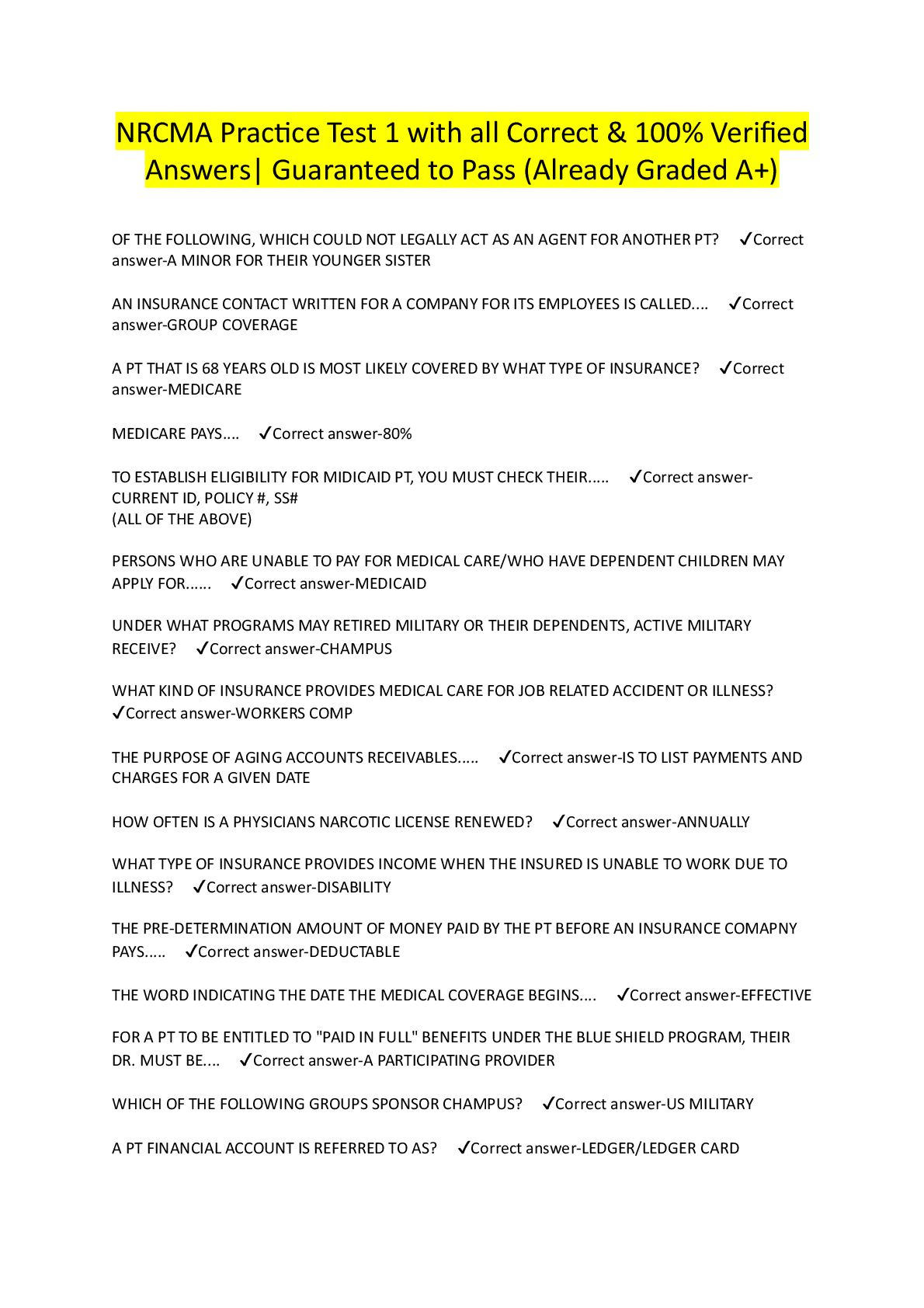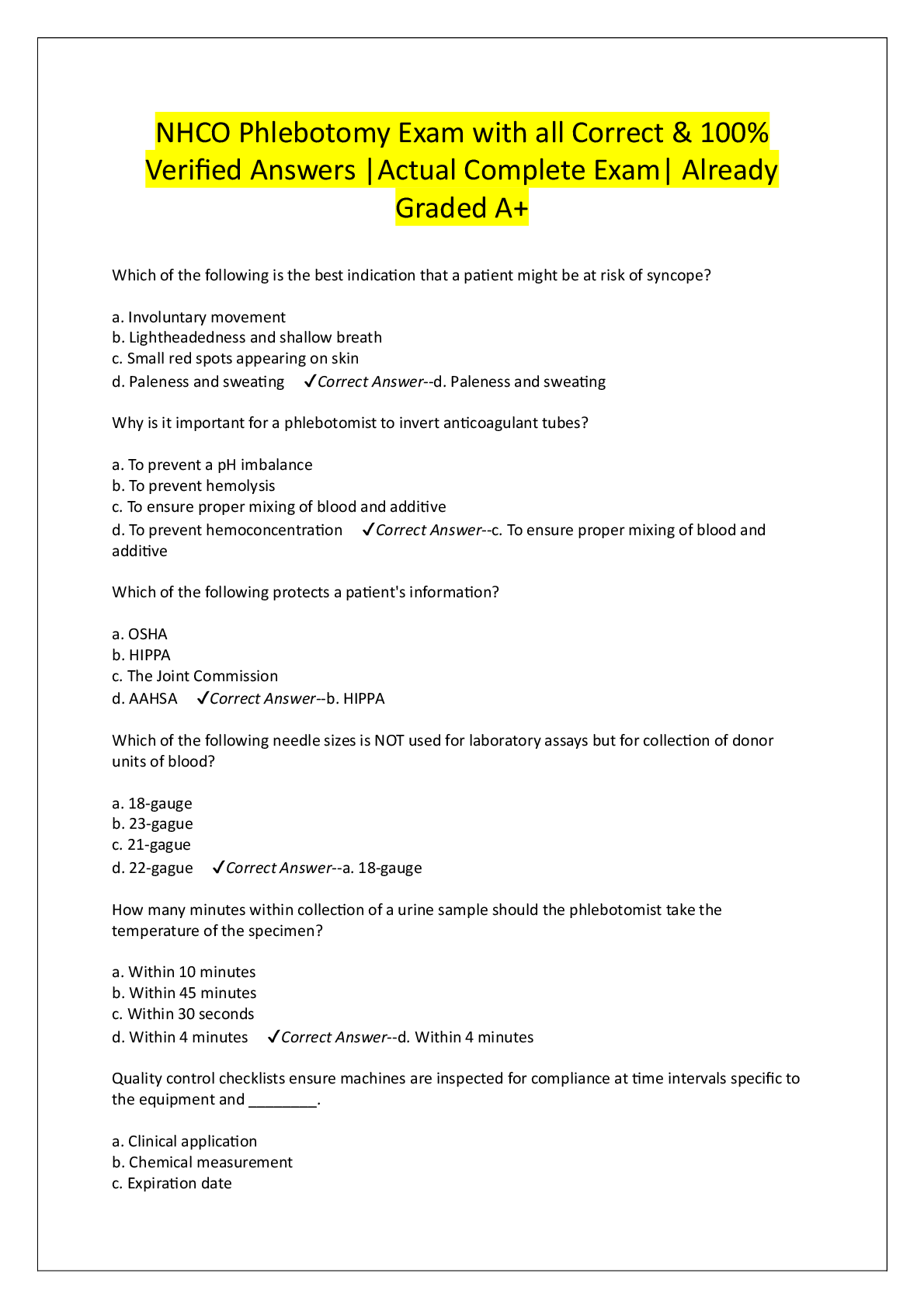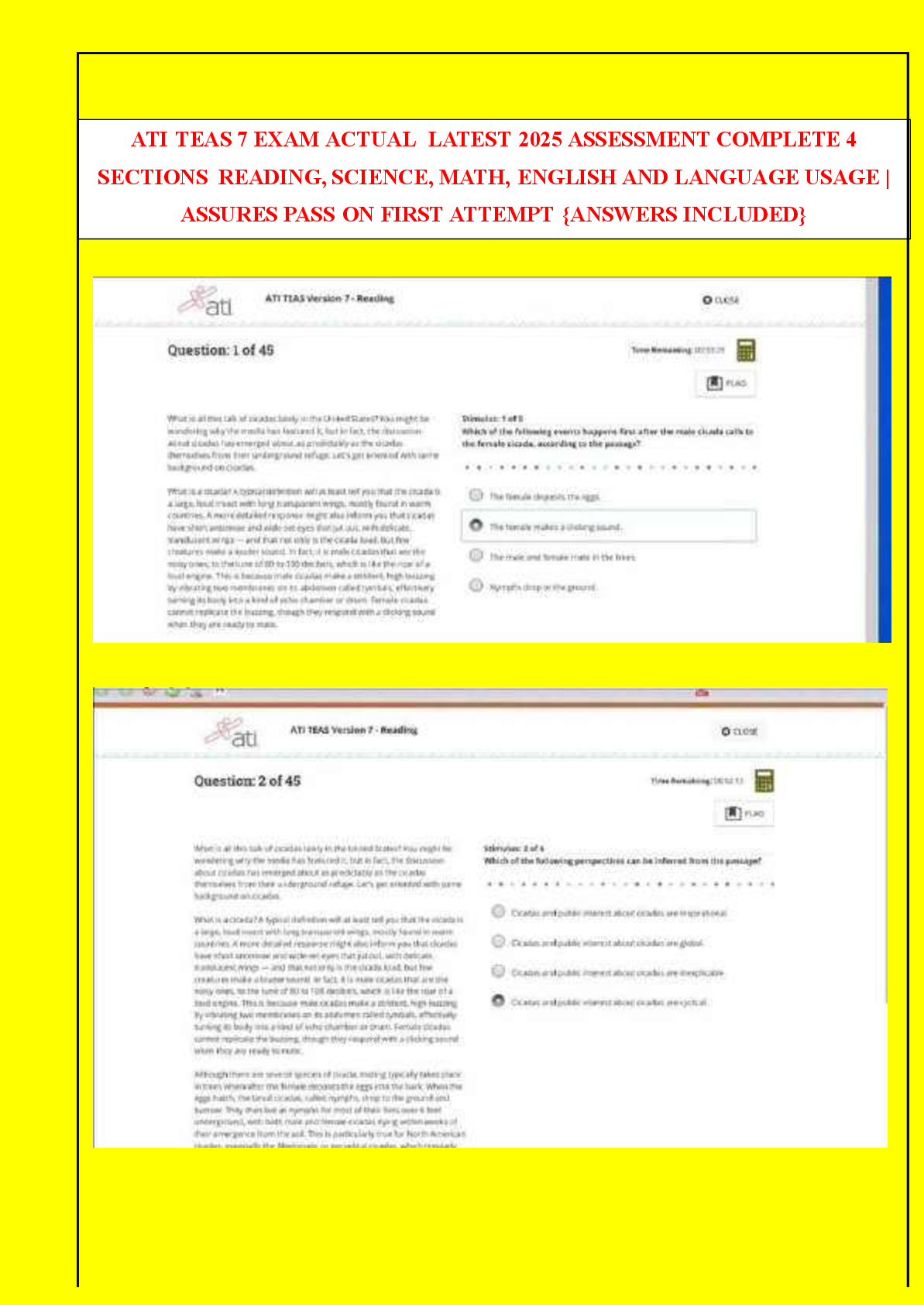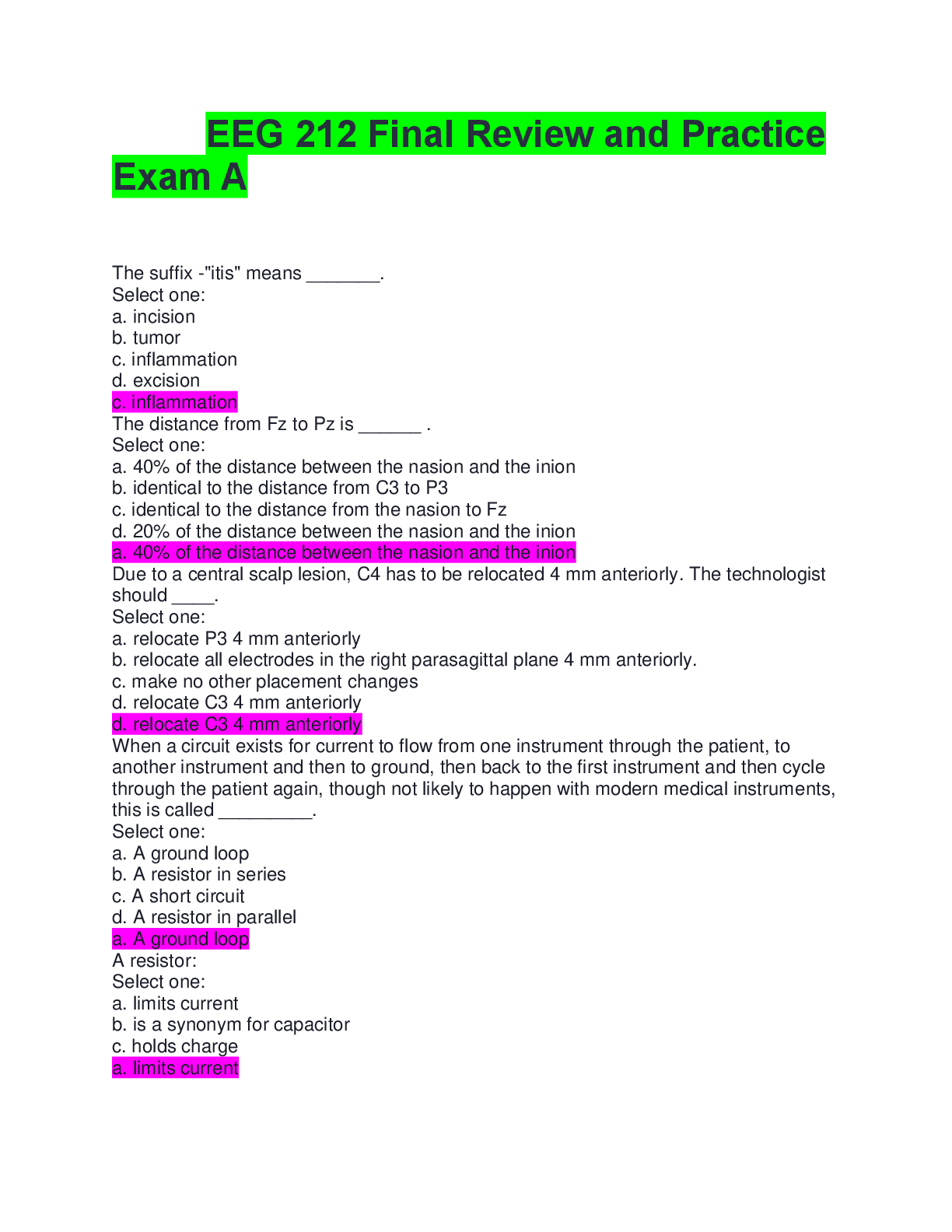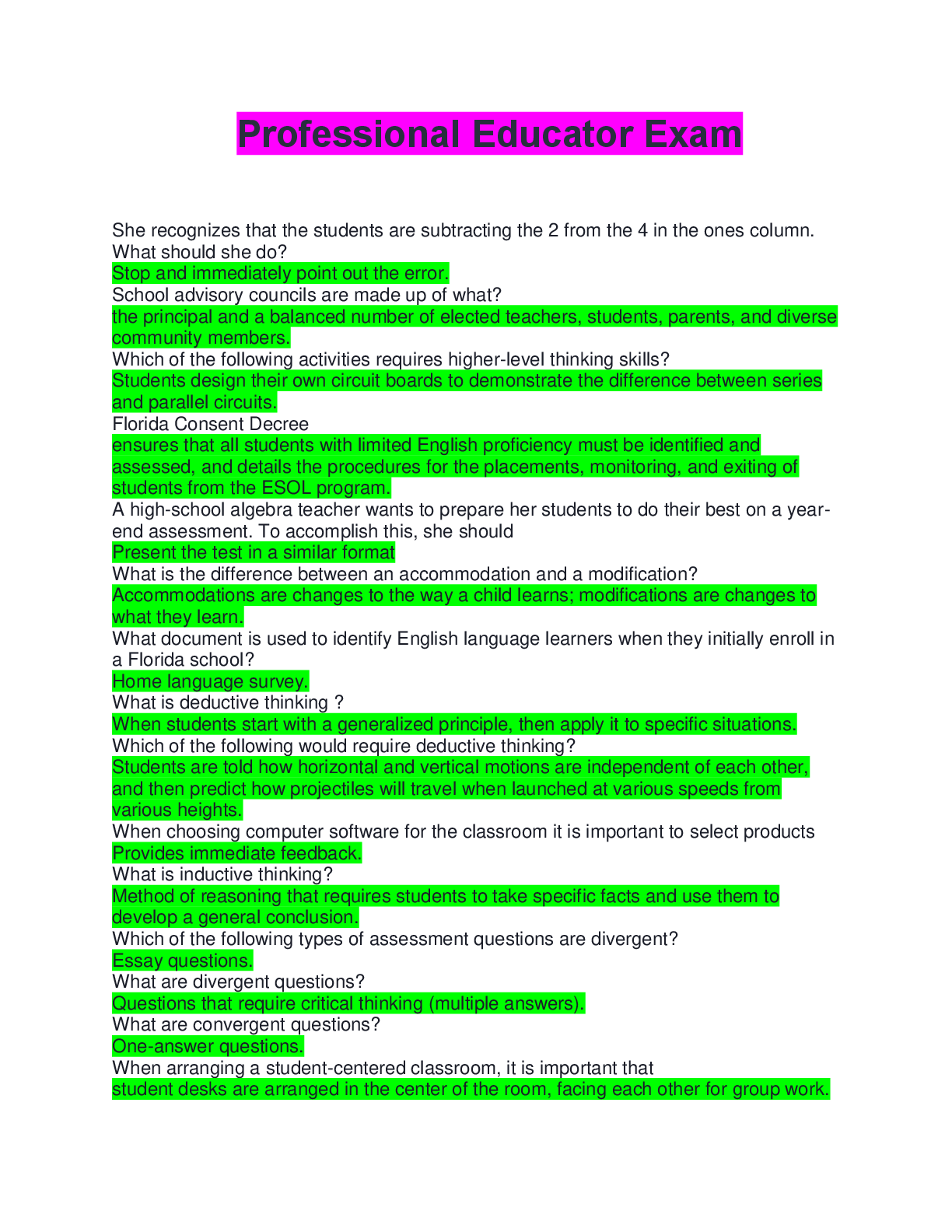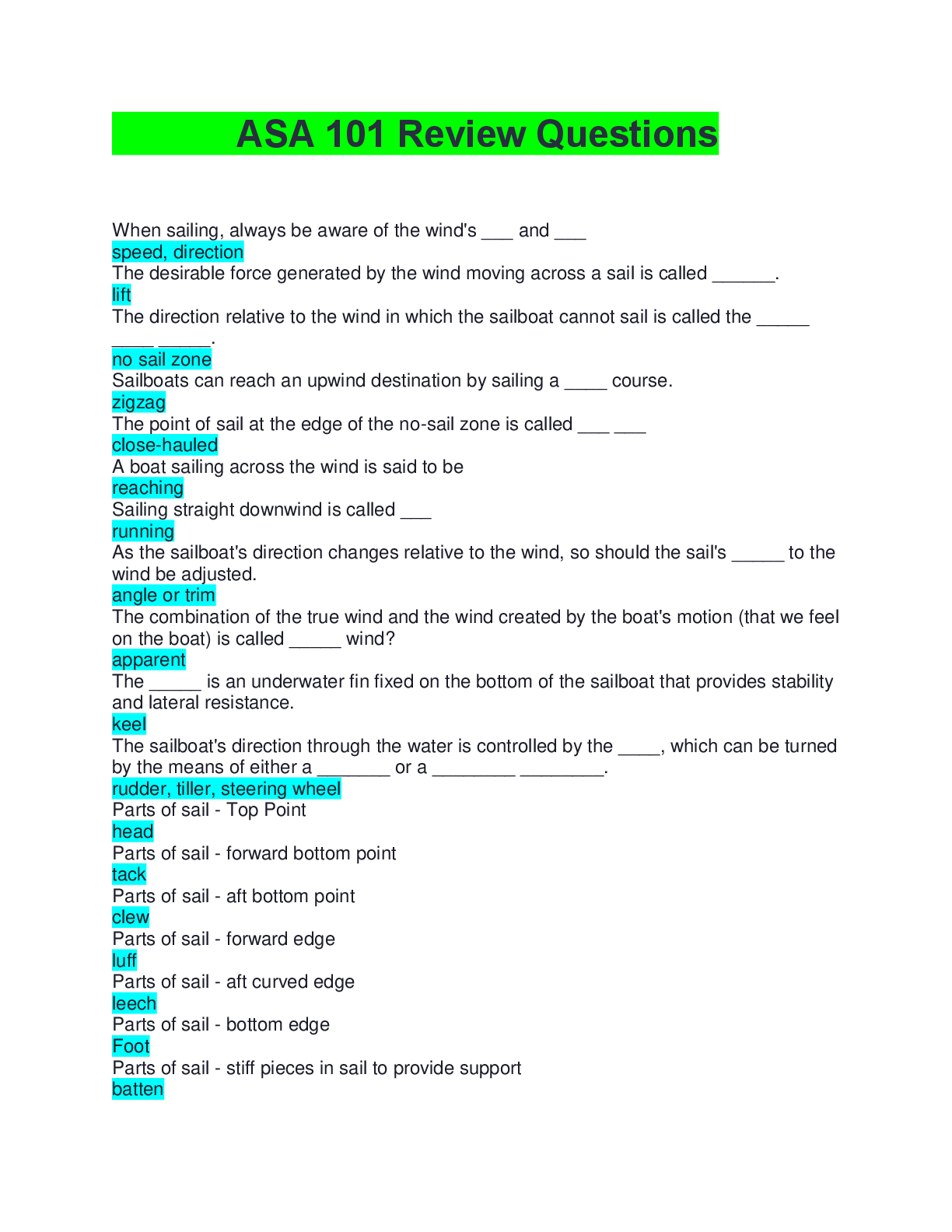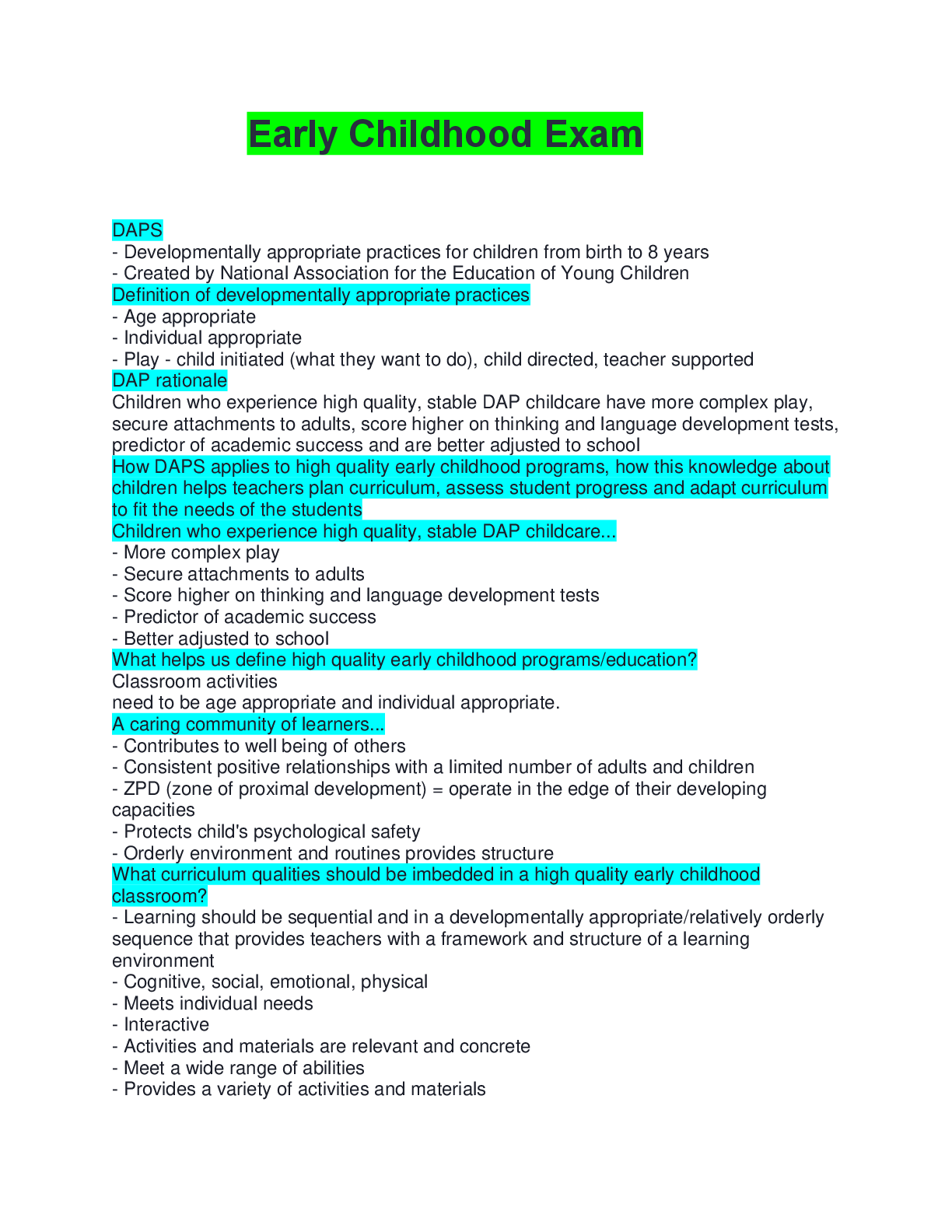A&P 1 101 Module 1 Exam Questions and Answers-Portage Learning
Document Content and Description Below
A&P Module 1 Exam Exam Page 1 All multiple choice questions have one answer unless otherwise specified. Choose the best response to the question with the information provided. 1. What is the study ... of the function of the human body? A. Anatomy B. Physiology C. Anabolism D. Catabolism E. Metabolism B. Physiology 2. Epithelium is an example of what level of organization in the human body? A. Chemical B. Organ C. Cellular D. Tissue E. Organ system D. Tissue 3. What is the synthesis of more complex substances? A. Anatomy B. Physiology C. Anabolism D. Catabolism E. Metabolism C. Anabolism Exam Page 2 Note: Essay answers must clearly be in your own words. All multiple choice questions have one answer unless otherwise specified. Choose the best response to the question with the information provided. 1. List the four basic types of tissues. The four basic types of tissues are: 1. Epithelial tissue 2. Connective tissue 3. Muscle tissue 4. Nervous tissue 2. List the three layers of the skin in order from deep to superficial. The deepest layer of the skin should be at the top of your list. To receive credit the layers must be in this order. The three layers of skin in order from deep to superficial are: 1. hypodermis 2. dermis 3. epidermis 3. Testosterone contributes to muscle strength and bone mass. Based upon your learning of metabolism, would it be considered an anabolic or catabolic hormone? Explain why. Testosterone is an anabolic hormone. Exam Page 3 Note: Essay answers must clearly be in your own words. All multiple choice questions have one answer unless otherwise specified. Choose the best response to the question with the information provided. 1. What anatomical orientation term is used to indicate "toward the back of the body"? A. Superior B. Inferior C. Ventral D. Dorsal E. Medial D. Dorsal 2. What anatomical orientation term is used to indicate "toward the lower part of a structure"? A. Superior B. Inferior C. Ventral D. Dorsal E. Medial B. Inferior 3. What anatomical orientation term is used to indicate "toward the body surface"? Superficial is the anatomical orientation term is used to indicate "toward the body surface." 4. What anatomical orientation term is used to indicate "closer to the point of attachment of a limb"? Proximal is the anatomical orientation term is used to indicate "closer to the point of attachment of a limb." 5. You are looking at a diagram of a patient standing in anatomical position. On the sheet of paper containing the diagram, which thumb points to the right side of the paper, right or left? The left thumb points to the right side of the paper. Exam Page 5 Note: Essay answers must clearly be in your own words. All multiple choice questions have one answer unless otherwise specified. Choose the best response to the question with the information provided. 1. Describe the position of the diaphragm in relation to the thoracic cavity in anatomical position terms. Use a full sentence for your description. In relation to the thoracic cavity, the diaphragm anterior and separates the thoracic cavity. 2. Which anatomical action is occurring at the elbow joint, in the direction of the arrow? Extension (of the elbow) 3. Look at the figure below. The right femur is moved in the direction of the arrow. What anatomical action term best describes this movement? Adduction Exam Page 6 Note: Essay answers must clearly be in your own words. All multiple choice questions have one answer unless otherwise specified. Choose the best response to the question with the information provided. 1. List two organs contained in the abdominal cavity. wo organs contained in the abdominal cavity are: 1. the stomach 2. the liver 2. True or False: The dorsal body cavity contains the cranial cavity, the spinal cavity, and the pelvic cavity. If your answer is false, rephrase the statement to make it a true statement. False. The dorsal body cavity contains the cranial cavity and the spinal cavity. Exam Page 7 Note: Essay answers must clearly be in your own words. All multiple choice questions have one answer unless otherwise specified. Choose the best response to the question with the information provided. 1. The body is divided into anterior and posterior sections by what type of plane? he body is divided into anterior and posterior sections by the frontal plane. 2. A section that is diagonal between horizontal and vertical planes is called what? A section that is diagonal between horizontal and vertical planes is called an oblique section. 3. Look at the diagram below. What type of plane is shown? A sagittal plane. Exam Page 8 Note: Essay answers must clearly be in your own words. All multiple choice questions have one answer unless otherwise specified. Choose the best response to the question with the information provided. 1. Using the letters given, match the cell with the type of solution it has been placed in: A cell beginning to swell A. Isotonic A red blood cell placed in ocean water B. Hypertonic A cell containing an equal amount of solute as the solution C. Hypotonic A cell beginning to swell - C. Hypotonic 2. Using the letters given, match each molecule/item with its typical means of entering a cell. You will need to use some means of entry more than once. Oxygen A. Diffusion Lipid-soluble molecules B. Facilitated diffusion Bacteria C. Endocytosis Polar molecules - Click here to enter answer - 3. Which one of the following is not true of active transport? A. Active transport occurs against the concentration gradient B. Carrier proteins move particles from greater concentration to lesser C. The sodium-potassium pump is an example D. additional energy is required to drive this process B xam Page 9 Note: Essay answers must clearly be in your own words. All multiple choice questions have one answer unless otherwise specified. Choose the best response to the question with the information provided. 1. Label the 5 organelles listed below: 1: 2: 3: 7: 9: 2. True or False? a. Cellular respiration occurs in the mitochondria. (T or F) b. The purpose of cellular respiration is to produce ATP. (T or F) c. Integral proteins are only found on the inner surface of a cell membrane. (T or F) d. Endocytosis is the process that occurs to eject biomacromolecules from the cell. (T or F) e. Pinocytosis uses a signaling molecule from another cell, binding to the cell membrane to bring about changes within the cell proteins. (T or F) Exam Page 10 Note: Essay answers must clearly be in your own words. All multiple choice questions have one answer unless otherwise specified. Choose the best response to the question with the information provided. 1. In your own words, discuss Tay-Sachs disease. What organelle within the cell is impacted? What are the symptoms of the disease and why do they occur? - Click here to enter answer - 2. You are observing two cells under the microscope. They are the same type of eukaryotic cell but one appears much larger. Based on appearance alone, which one would you expect to be carrying out respiration at a more active rate, the larger or smaller cell? Explain why. - Click here to enter answer - [Show More]
Last updated: 3 years ago
Preview 1 out of 6 pages
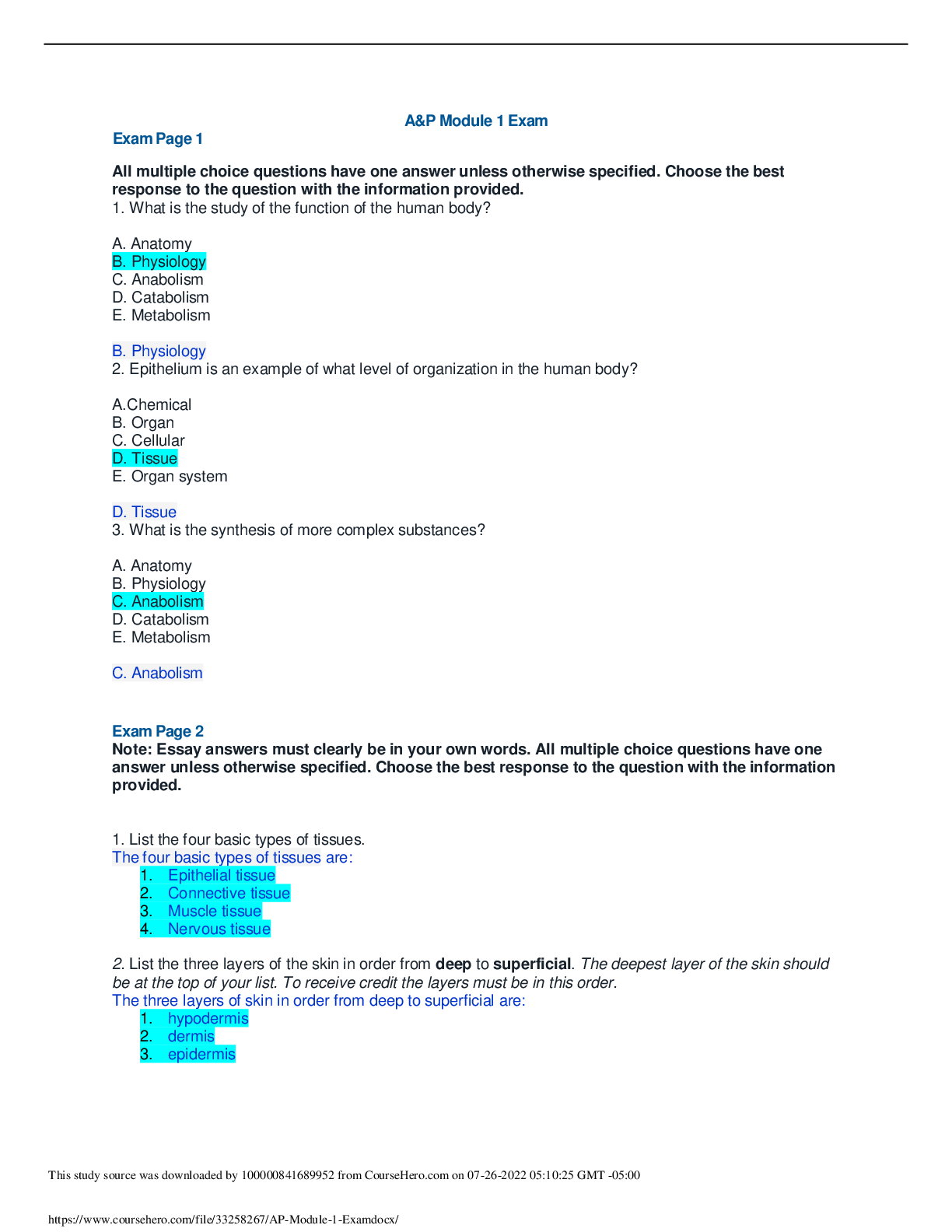
Buy this document to get the full access instantly
Instant Download Access after purchase
Buy NowInstant download
We Accept:

Also available in bundle (2)
Click Below to Access Bundle(s)
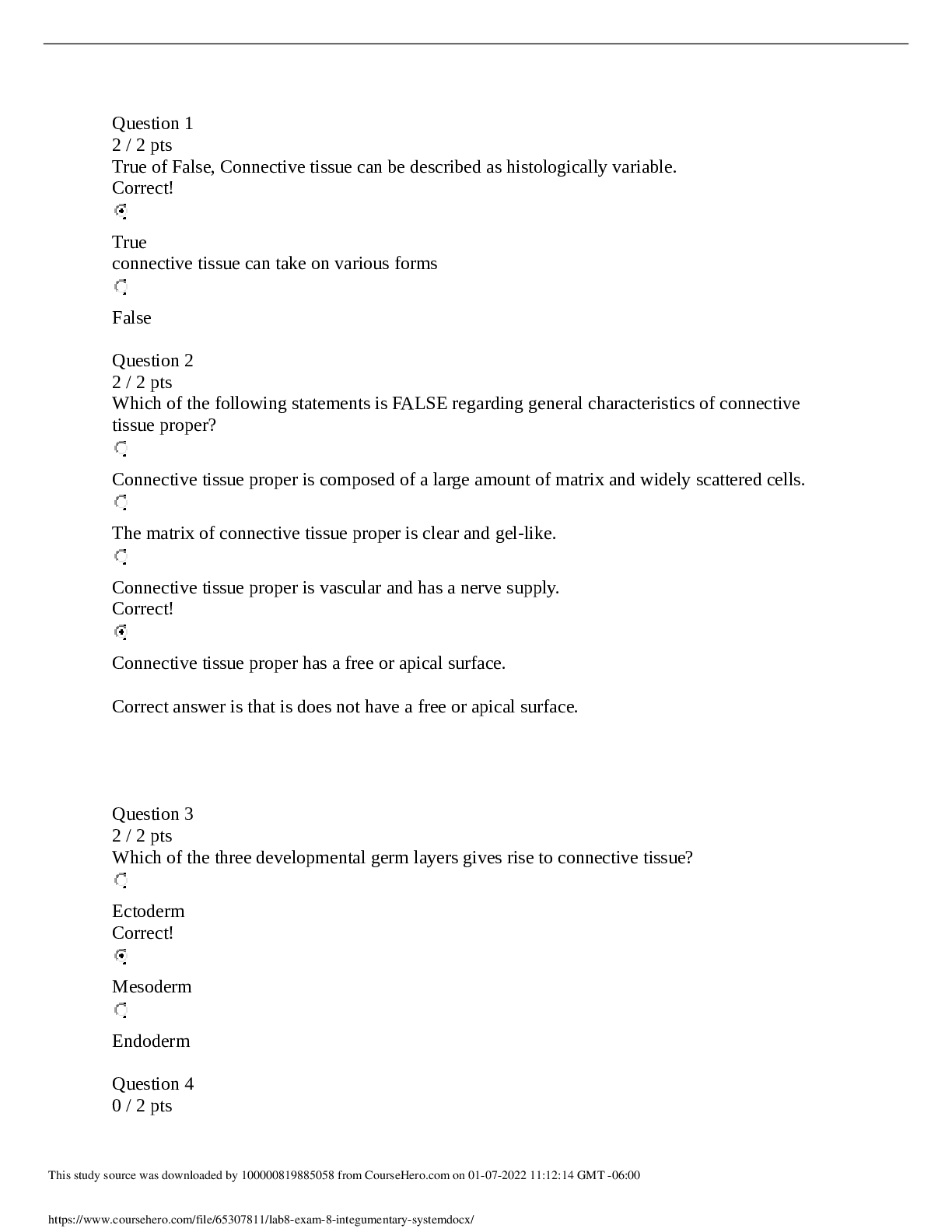
A&P 1 101 Module 1-8 Exam BUNDLE Comprehensive set Portage Learning (RATED A)
A&P 1 101 Module 1-8 Exam BUNDLE Comprehensive set Portage Learning (RATED A)
By Prof. Goodluck 4 years ago
$14.5
8

BIO 202L LAB Worksheets PACKAGE (LAB 10- LAB 18) Compiled | best Exam bundle for quick study (GUARANTEED PASS).
BIO 202L LAB Worksheets PACKAGE (LAB 10- LAB 18) Compiled | best Exam bundle for quick study (GUARANTEED PASS).
By Prof. Goodluck 4 years ago
$14.5
17
Reviews( 0 )
$13.50
Can't find what you want? Try our AI powered Search
Document information
Connected school, study & course
About the document
Uploaded On
Jun 29, 2021
Number of pages
6
Written in
All
Additional information
This document has been written for:
Uploaded
Jun 29, 2021
Downloads
1
Views
245


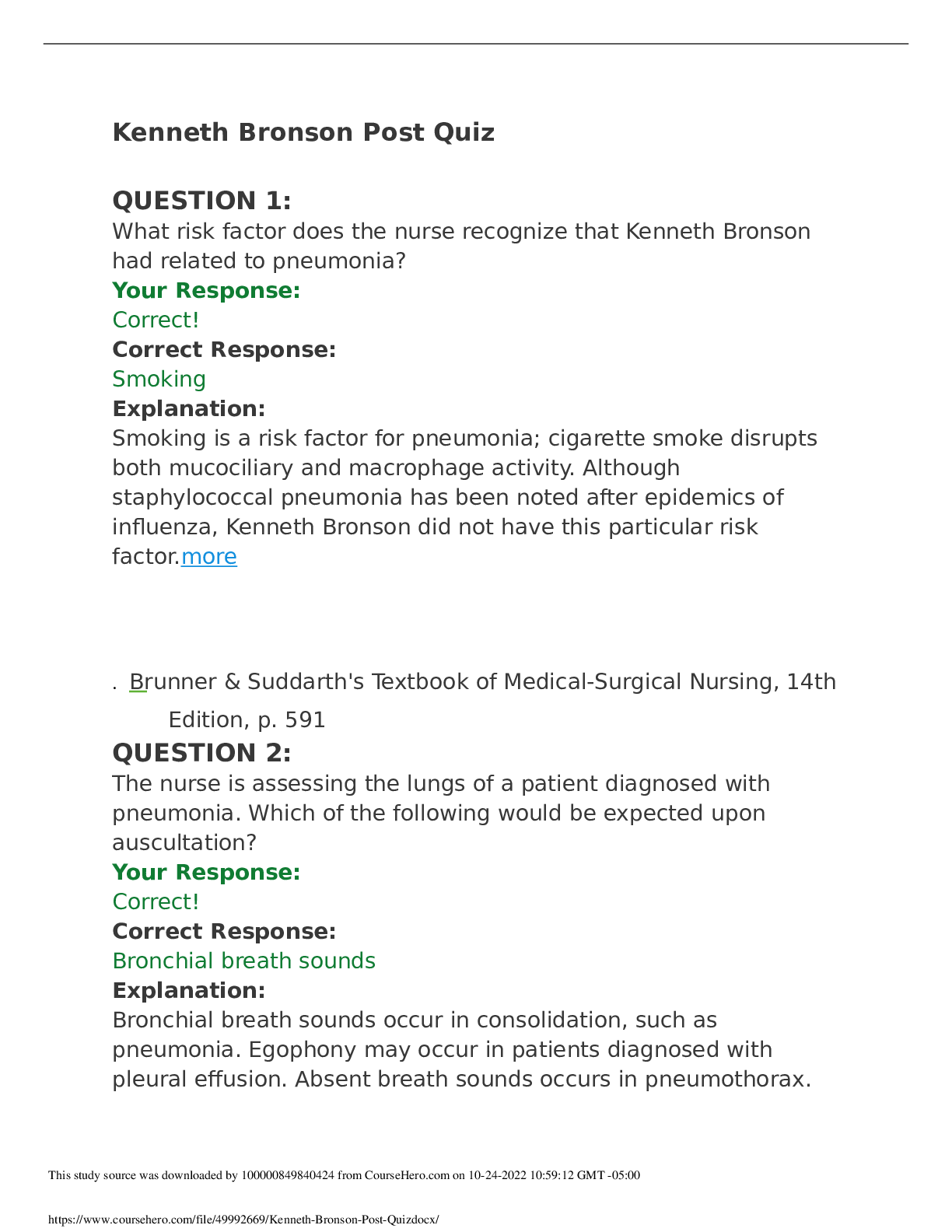



 Questions and Answers 100% VERIFIED.png)
 Questions and Answers 100% correct Solutions.png)





